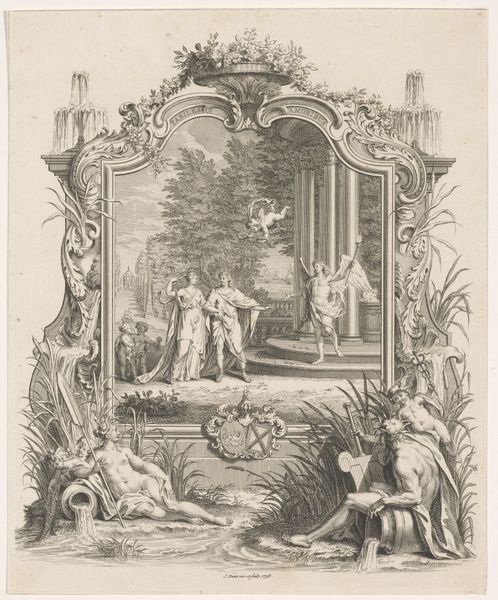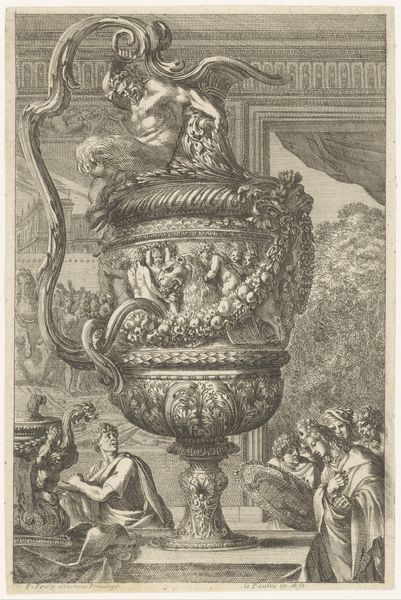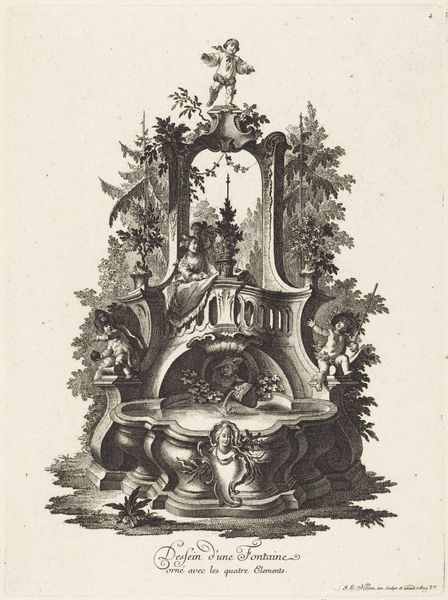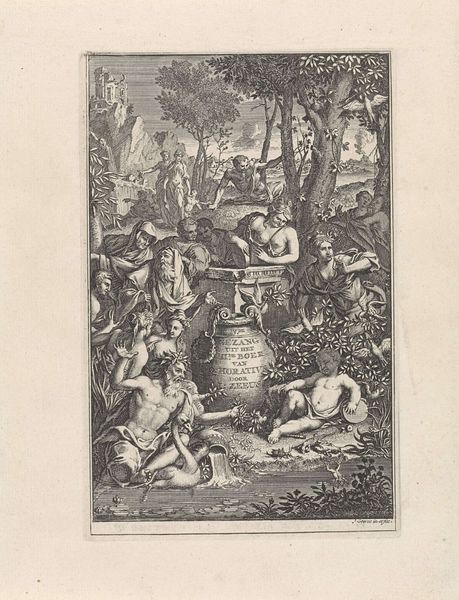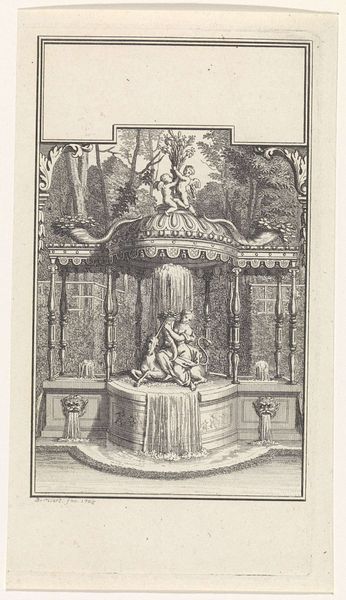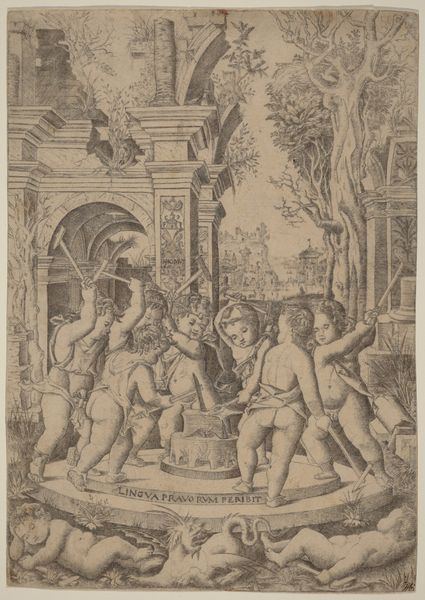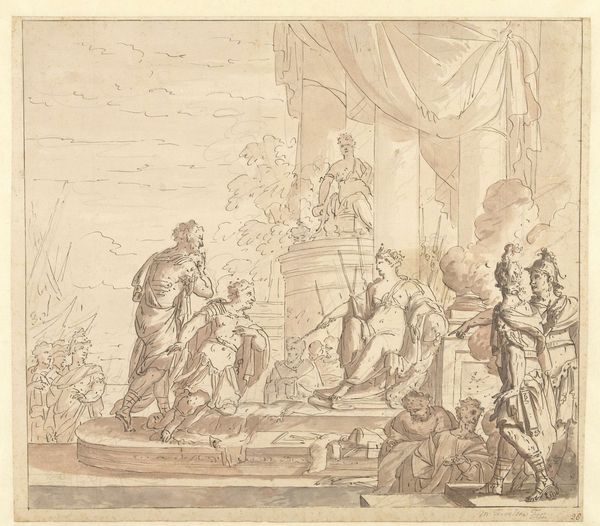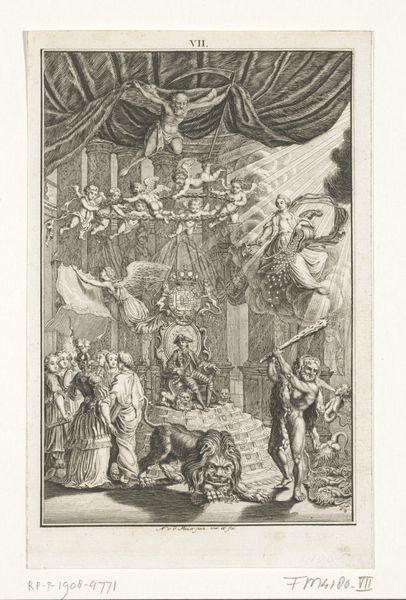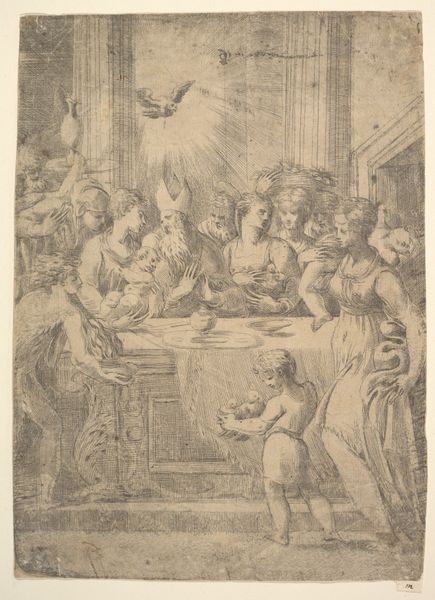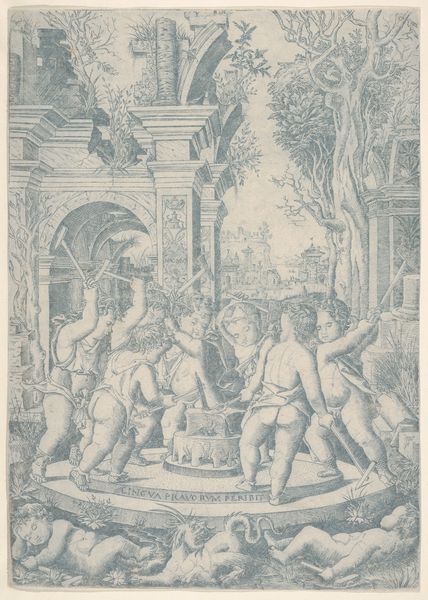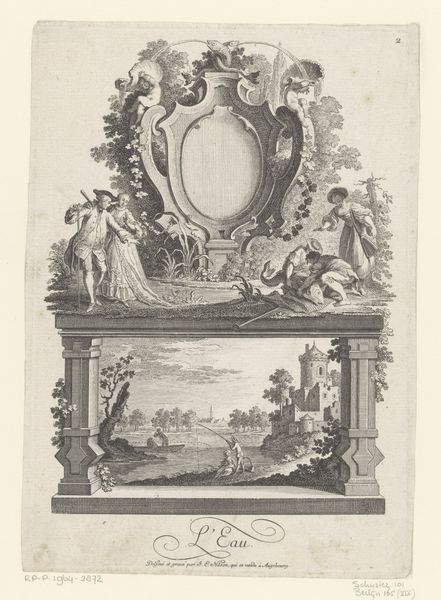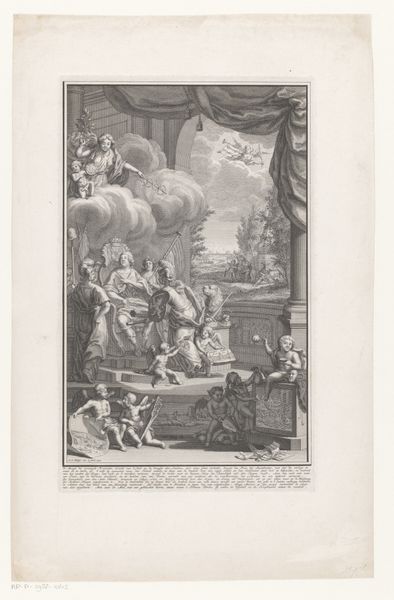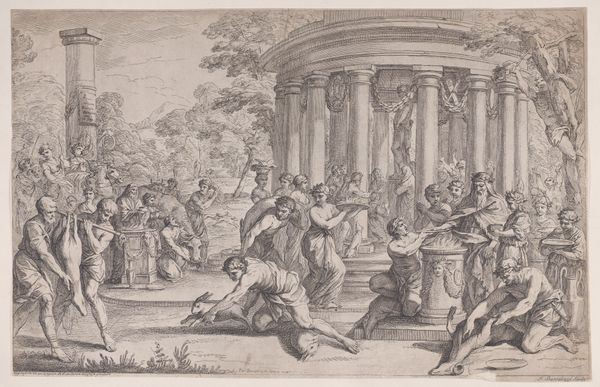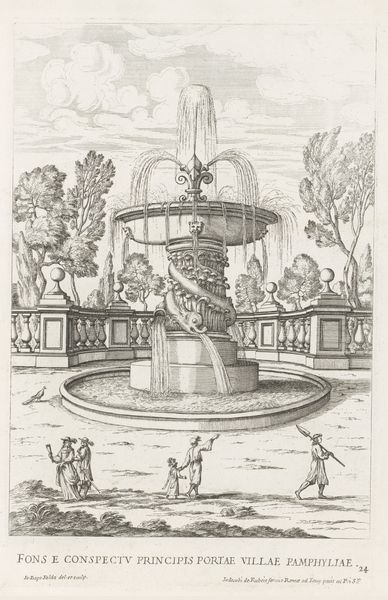
The Medici vase, a large vase to right decorated with a representation of the sacrifice of Iphigenia, on a garden terrace, a teenage boy seated to left with a pen and paper with a drawing of the vase, cyprus trees and an obelisk to left in the background, from 'Six large views, four of Rome, and two of the Roman countryside' (Six grandes vues, dont quatre de Rome et deux de la Campagne romaine) 1656
0:00
0:00
drawing, print, etching, engraving
#
portrait
#
drawing
#
ink drawing
#
baroque
# print
#
etching
#
landscape
#
boy
#
vase
#
figuration
#
history-painting
#
italian-renaissance
#
engraving
Dimensions: Sheet: 12 1/4 x 10 7/8 in. (31.1 x 27.7 cm)
Copyright: Public Domain
Curator: This is Stefano della Bella's etching, “The Medici vase, a large vase to right decorated with a representation of the sacrifice of Iphigenia,” created around 1656. Editor: It's immediately striking how Bella uses light and shadow. The etching captures such a dynamic scene with depth, making the marble vase practically pop from the plane. Curator: Indeed, Bella excelled in depicting both grand spectacle and minute detail. Consider how this print engages with the contemporary vogue for antiquarianism and the Grand Tour. Here we have the Medici Vase situated not merely as an object, but as a symbol of classical knowledge being encountered by a youthful scholar. Editor: You raise an interesting point. The Medici Vase in the Medici gardens – it is quite clearly a display of wealth and power for a specific audience in a specific place. I mean look at the boy with his sketchbook— a direct representation of the manner the vase could be consumed or considered! And further behind him in the garden the other statues also positioned for maximum viewership and discourse. Curator: Quite right. And beyond its social implications, there is also this interplay between the sculpture itself, depicting the drama of Iphigenia’s sacrifice, with the seeming placidity of its environment in the gardens. The tragedy is somehow removed, contained, objectified... almost decorative. Editor: Yes, and Bella’s choice of medium--etching—further contributes to that. It is not immediate like sculpture is – its black and white print appearance creates both distance and accessibility, so the imagery can be widely viewed, which spreads the knowledge and the status of the patron along with it. It almost presents a question, does the wide distribution and ease of consuming antiquity change its innate impact? Curator: Fascinating. Bella's print is, in its own way, a monument to the reception of classical art, as much as it is a celebration of the artwork. It provides this incredible look into the role of collecting, the role of study, and the transformation of the antique into a cultural commodity. Editor: Precisely. Examining it through these different lenses gives us such an involved impression.
Comments
No comments
Be the first to comment and join the conversation on the ultimate creative platform.
